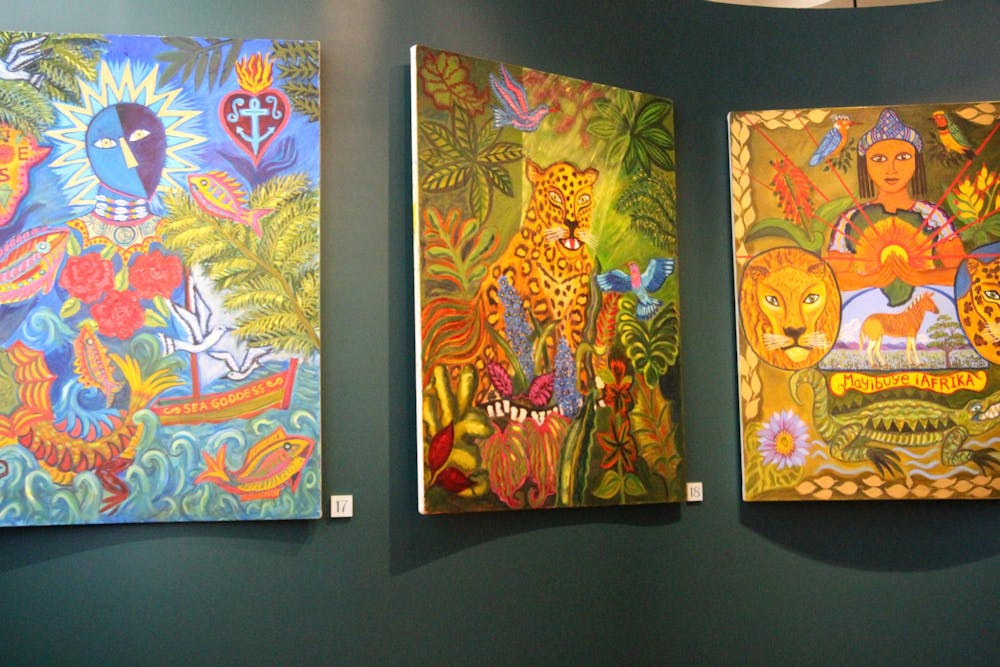At IU’s McCalla School, which houses University Collections, eight galleries preserve and bring to life art collections ranging from Bob Dylan’s guitars to an array of marine mollusks and shells.
McCalla was an elementary school from 1907 to 1973 and an art studio space after being bought by IU in 1978. It was renovated and reopened as University Collections in August 2022.
The McCalla School contains galleries, offices, classrooms and event spaces that are often utilized for faculty lectures, functions by student organizations and events with Bloomington community groups.
According to Heather Calloway, executive director of University Collections, some classes that have utilized the teaching spaces at McCalla include anthropology, courses in the Jacobs School of Music, a curatorship program and the Elizabeth Sage Costume Collection.
A lecturer who teaches a class about The Beatles this semester brought his class to McCalla to utilize the Amped at IU collection, which featured guitars from members of The Beatles, Bob Dylan and Kurt Cobain, McCalla director Brian Woodman said. The instruments are part of the Jim Irsay Collection. Irsay, the owner and CEO of the Indianapolis Colts, according to his website, has a passion for music, history and pop culture that led him to collect instruments and other items owned by music icons.
The galleries, located at 525 E. Ninth St., are open to the public for free Tuesday through Friday from 11 a.m. to 4:30 p.m.
“Our goal is to really make (University Collections) accessible and approachable so that faculty can teach with it, so that it's not just closed in storage, but that it's out here where students get to learn new stories and hear new stories,” Calloway said.
In one gallery, IU graduate students in the Eskenazi School of Art, Architecture and Design can curate an exhibit that features their artwork and showcase it in one of the galleries, Woodman said.
The galleries usually change collections once a year. Along with showing collaborations with artists, the collections are often sourced from any of the nine IU campuses, seven culture centers, the African American Arts Institute, campus libraries, the Eskenazi Museum of Art and the University Archives.
“No one else can be as eclectic as we are and seek out all these different collections and put them all in one building,” Woodman, who also serves as associate director of University Collections, said.
Woodman said one of the exhibits he was the proudest of was the “Stotter Shell Collection,” which had been donated to IU in 1975. The collection contained marine mollusks, corals and exotic shells in various sizes, shapes, colors and patterns.
“They belonged to a professor who passed away. They got crated up and put into storage at the surplus building,” he said. “And it was just in the back, in storage, and someone driving a forklift poked through the crate and was like, ‘What’s that? That looks interesting.’”
Woodman said that people loved the shells and that they had never previously been on display. Many are “one-of-a-kind" and don’t exist anymore. Many collection owners don’t have the money or resources to put them on display in the way that University Collections can, Calloway said.
Woodman said University Collections frequently does work to help when issues like flooding or mold could threaten a collection outside of McCalla.
When it comes to curating a gallery, the 13-person University Collections team receives the pieces for a collection and then must adapt them into an exhibit for the gallery.
For one archived exhibit, “Take a Bite Out of Science: The Tools and Technology of Teeth,” University Collections staff worked to create molds and stands to hold the bones. For a skull of a Wooly Mammoth, they created a device that propped the jaw open and had an arm holding up a loose tooth, showing how it fits into the jaw.
Many of McCalla's collections have evoked emotional responses for people in different ways. One example was the now archived exhibit, “Bettina Rheims: Everything All at Once.”
This exhibit featured “portraits of androgynous people intentionally and visibly queering and contradicting gender norms,” taken between 1989 and 1991, according to University Collection’s website.
“We got a lot of responses from people coming out of that one where they were tearing up talking about what it means to have images showing them on the walls as true art,” Woodman said. “Not just students, we had people that were actually much older, who remembered growing up 50 years ago and feeling isolated, and how that meant something to them to see.”




